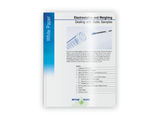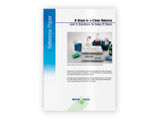To use all functions of this page, please activate cookies in your browser.
my.bionity.com
With an accout for my.bionity.com you can always see everything at a glance – and you can configure your own website and individual newsletter.
- My watch list
- My saved searches
- My saved topics
- My newsletter
Precordial examination
The exam includes several parts:
Additional recommended knowledge
Position/Lighting/DrapingPosition - patient should be supine and the bed or examination table should be at a 45 degree angle. The patient's hands should remain at her sides with her head resting on a pillow. Lighting - adjusted so that it is ideal. Draping - the chest and neck should be fully exposed. InspectionCareful inspection for:
PalpationThe valve areas are palpated for abnormal pulsations (known as thrills) and precordial movements (known as heaves). Heaves are best felt with the heel of the hand at the sternal border. Palpation of the apex beatThe apex beat is typically palpable in the fifth intercostal space and 1cm medial to the mid-clavicular line. It is not palpable in some patients due to obesity or emphysema. The apex beat should be described by the following characteristics (which can be remember with the mnemonic SALID:
To accurately determine the location of an apex beat which can be felt across a large area, feel for the most lateral and inferior position of pulsation. An apex beat in the axilla would indicated cardiomegaly or mediastinal shift. Note that the apex beat does not exactly correspond to the apex of the heart. AuscultationOne should comment on
and the presence of
See also
Categories: Cardiology | Medical tests | Physical examination |
|||||||||
| This article is licensed under the GNU Free Documentation License. It uses material from the Wikipedia article "Precordial_examination". A list of authors is available in Wikipedia. | |||||||||







